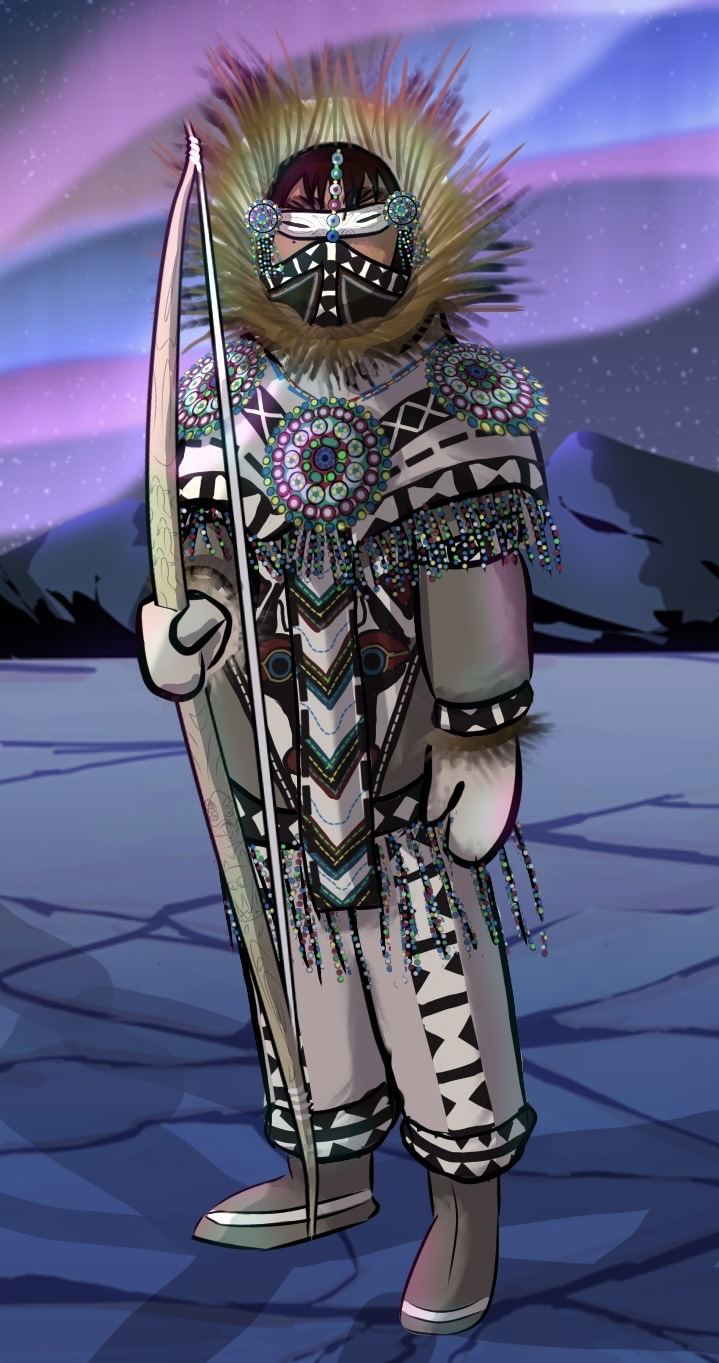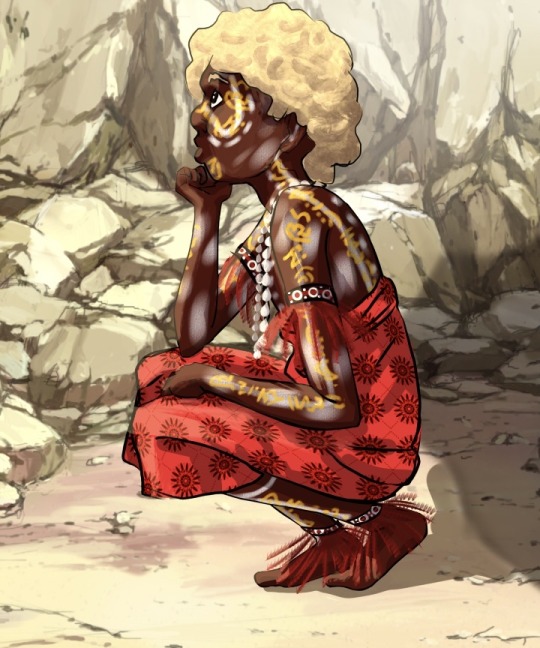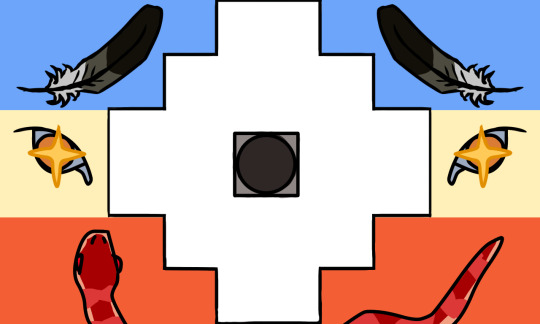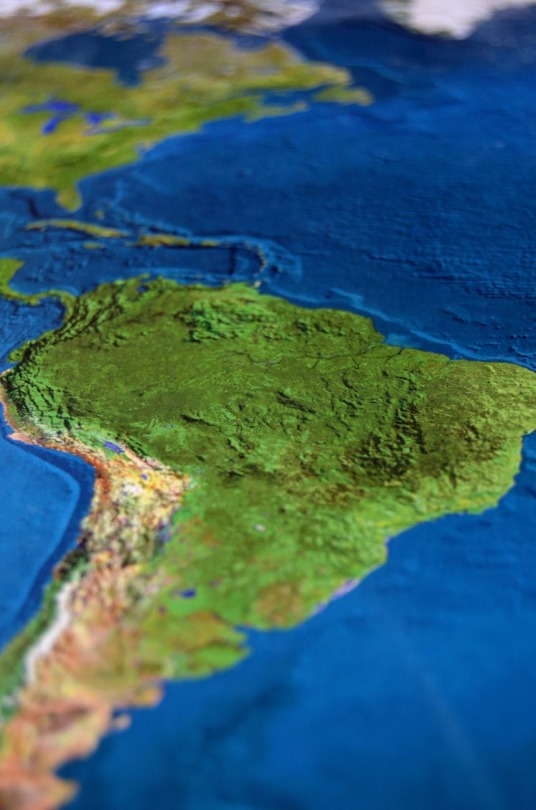#Quechua culture
Explore tagged Tumblr posts
Text
Meet the Andean Communities Along the Ausangate Cusco Trek

The Ausangate Cusco trek is not just a journey through breathtaking landscapes but also a cultural immersion into the rich traditions of the Andean communities. As one of the most rewarding trekking routes in Peru, it offers a unique opportunity to interact with local indigenous groups who have preserved their customs for generations. Ausangate Peru takes pride in offering authentic experiences where travelers can connect with the true essence of Andean life while exploring the majestic mountains.
Discover the Local Andean Culture
The remote villages along the Ausangate Cusco trek are home to Quechua-speaking communities that continue to live in harmony with nature. These communities, such as Pacchanta and Upis, are known for their welcoming hospitality, colorful textiles, and traditional ways of life. Herders and weavers in these villages rely on alpacas and llamas for sustenance and craftsmanship, producing some of the finest handwoven garments in Peru.
When trekking with Ausangate Peru, travelers can visit these villages and witness firsthand the traditional weaving techniques that have been passed down for centuries. The intricate patterns and vibrant colors of Andean textiles reflect the spiritual beliefs and daily lives of the people. Purchasing these handmade products directly supports local artisans and helps sustain their ancestral traditions.
Experience Andean Gastronomy and Traditions
One of the highlights of the Ausangate Cusco trek is the chance to enjoy authentic Andean cuisine. Locals often prepare meals using fresh, organic ingredients such as potatoes, quinoa, and corn—staples that have been cultivated in the Andes for thousands of years. Pachamanca, a traditional cooking method where food is baked underground with hot stones, is a must-try experience for those seeking a taste of indigenous culture.
In addition to the culinary delights, visitors can partake in spiritual ceremonies led by local shamans. These rituals, deeply rooted in Incan traditions, often involve offerings to Pachamama (Mother Earth) as a way of expressing gratitude and seeking blessings for a safe journey. Such experiences provide a profound connection to the Andean way of life and the natural world.
Breathtaking Scenery and Local Hospitality
While the towering peaks and turquoise lakes make the Ausangate Cusco trek an unforgettable adventure, the warmth and generosity of the Andean communities leave an equally lasting impression. Trekking with Ausangate Peru ensures a responsible and enriching experience, as the company prioritizes sustainable tourism practices that benefit the local populations.
Many travelers opt for homestays or community-run lodges, where they can share meals with local families and learn more about their daily routines. These interactions foster cultural exchange and provide deeper insight into the resilience and wisdom of the Andean people.
Trek with Purpose
Choosing Ausangate Peru for your trekking adventure means supporting ethical tourism that respects indigenous communities and their environment. Every step along the Ausangate Cusco trail brings not only awe-inspiring landscapes but also meaningful encounters with the people who call these mountains home.
If you’re looking for a trekking experience that goes beyond scenic beauty and delves into the heart of Andean culture, book your journey with Ausangate Peru today. Discover the harmony between nature and tradition on the mesmerizing Ausangate Cusco trek.
#Ausangate Cusco#Andean communities#trekking Peru#Ausangate Peru#Andean culture#Cusco trekking#Ausangate trek#sustainable tourism#Quechua culture
0 notes
Text

Quechua woman, Peru, by Mihaela Noroc
#quechua#peru#america#south america#folk clothing#traditional clothing#cultural clothing#traditional fashion
585 notes
·
View notes
Text

for @kataang-week -- day 4: cultural exchange
(ID: a digital drawing of katara and aang from atla. they're wearing clothing from each other's cultures. katara is wearing a yellow chuba with red trim, an orange shirt, a chumpi belt, and boots. she has one necklace with small turquoise beads and one with large yellow beads. aang is wearing a parka with a thick fur hood and black-and-white geometric patterns, and dark blue pants. he also has mittens and large boots on. they're smiling at each other, with pink hearts floating between them.
#kataang week#kataang#kataang fanart#artists on tumblr#atla#avatar: the last airbender#cimmeriadraws#the chumpi belt is a traditional andean garment#i assume part of the reason tibet serves as inspo for the air nomads is the high altitude of where they live#and quechua people also live in high altitudes so i think they'd be interesting to pull inspiration from for air nomad clothing#plus atla has already taken inspo from south american cultures with the sun warriors so it works :)#but anyway all i have in this drawing is the chumpi belt so i'd like to incorporate more andean culture into air nomad designs in the futur#i also want to dive some more into siberian and alaskan indigenous clothing for the southern water tribe fashion#and explore ideas for differences between nwt and swt clothing
309 notes
·
View notes
Text
This guy made a video about how rainbow-type flags aren't just representative of pride, using the Quechuan flag seen in Andean countries as an example.
instagram
And its pretty neat. I especially like the bit where he explains that it had an extra stripe, a light blue one.
I want all the people that bothered to post comments on the video to be shot


Like, he outright says its a different thing. On top of that, because I had to study this shit, the six-stripe pride flag, the one shown in the video, is not the original in regards to ideation or even conceptualisation. Gilbert Baker wanted pink on the flag, but the thread was hard to come by so he left it out because of money and accessibilty reasons: there was no mention of light blue when I was researching a long while back. That six-stripe flag you see is the one that got shown to the public first, note that Gilbert Baker has nothing to do with any Andean cultures.
Anyway I think its swag as fuck that similar looking flags are getting used by different groups and that this just flat out isn't cultural appropriation and you're a fucking loser if you think that/are using it as a reason to be homophobic.
#Pride#Andean culture#Ecuador#Quechuan#Quechua#Rainbow flag#Gilbert baker#Cultural appropriation#Instagram
11 notes
·
View notes
Text





I made another one
#art#illustration#digital art#digital drawing#oc artwork#albinism#fantasy#fictional cultures#fantasy culture#loosely inspired by#inuit#rromani#quechua#aboriginal australian#maori
24 notes
·
View notes
Text
I kind of want to learn (self teach) a language based on the most spoken language of some of my non-european genetic ancestry regions.
the only language remotely close to something i know would be Vietnamese since I've attempted East Asian languages before, but I'm pretty sure there's a lot of differences between it and Mandarin/Korean/Japanese
#academia#black studyblr#black academia#studyblr#student#langblr#language learning#languages#yoruba#vietnamese#quechua#akan#bambara#kikongo#tamil#choctaw#culture#poc langblr#poc studyblr#poc academia#poc dark academia#let's ignore that i forgot to add benin and togo to the poll..... 😭
9 notes
·
View notes
Text
unveiling my take on the quariwarmi* flag!
edit: my sincere thanks to @ayachaska for the helpful feedback!
Quariwarmi is typically spelled this way when translated, but our languages don’t use the QU sound. Some people spell it qhariwarmi, and there are variations, I use qariwarmi.

Qariwarmi + Tinkuy Flag
please DO NOT USE MY DESIGN TO FURTHER YOUR PRODUCTS IF YOU ARE NOT QARIWARMI URSELF. ahem,
I have designed this one in the vein of a sunrise, or a dawn. As qariwarmi were historically entrusted with bringing about the dawning of new days, and with it, the watering of fields. It could be likened to the Paqari / dawn version of a flag.
EDIT: This was made possible with input from fellow qariwarmi people. Thank you, paylla!!!
It follows a tricolor pattern: sky blue, sunny yellow, and a peachy orange shade. They represent Hanaq Pacha , Kay Pacha, and Uku Pacha.
Symmetrical symbols as follows,
ONE : CHAKANA , gray to black in the center.
TWO : CONDOR FEATHERS , representing the messenger of the heavens.
THREE: EYES OF THE GREAT CHUQUI CHINCHAY , shining down from that liminal dwelling within kay pacha. it’s eyes are silver with copper pupils and gold stars twinkling, a nod to Chuqui Chinchay’s multi-gendered nature.
FOUR : THE WRITHING MACH’AQWAY based off watapuñuq (the boa), dweller of uku pacha and subterranean land.
It is an identity spanning from the convergence of two rivers, the Mosna and the Huanchesca at the sacred site known today as Chavín de Huantar / Chawpin Wantar.
I really don’t feel the need to explain the complexities with this identity, but you should know that it is an identity that originated within the Quechua language, and belongs to people in the Andes who are native to the region. However, it is not just a Quechua identity and has applications for other language speaking groups as long as they are in the Andes.
Tinkuy people, this is yours to use as well, just y’know credit me, pretty please.
#oh deer god this took forever to write#i hope it’s easy 2 understand#if anyone has questions plz ask#im always willing to make improvements#cultural gender#quariwarmi#pride flag#quechua#indigenous art#tinkuy#qariwarmi#qhariwarmi#kamamanta#☀️🌙#yananchay
46 notes
·
View notes
Text

In Incan mythology, Mama Quilla, the Inca goddess of the moon, is married to Inti, the Inca god of the sun. The sun and moon relationship is complementary and the union symbolizes love, balance, and harmony. ❤️🇵🇪
#inca#inka#peru#peruvian#ancient wisdom#goddess#culture#cuzco#quechua#pagan#love#valentines day#celtinka
2 notes
·
View notes
Text
can one simply not see how its insulting for an american tv channel to call spanish, the second most spoken language in the usa, 4th in the world, "non english" while captioning bad bunny lol. its plain disrispect and boring ignorant americans acting like they dont live in a hilariously multilingual country. and now the even more ignorant american lefties jumping to act like its alright actually bc spanish is also a colonizer language. get fucking real man
#m#also are we rly gonna act like the usa and therefore english dont have a tight grip on the culture of latam#like english isnt the main second language taught in most schools bc its hegemonic and seen as basic necessity instead of#languages of our own nations like quechua aymara or languages of our close neighbours like portuguese guarani?#god every day americans prove to be stupid as fuck and soo fucking dense and annoying
7 notes
·
View notes
Text
Go somewhere else with the whitesplainin.
2. I never said he invented singing in Quechua, or even that he's the first Quechua pop singer. I said he coined the term Q-Pop because, if it wasn't obvious by the naming convention, he takes direct inspiration from K-Pop. And most importantly:
3. This isn't a fucking competition about who knows more indigenous music for how long. Just share the fucking music and move on.
Don't get me wrong, I'm thankful for your additions, but you could've done them without the snobbish passive-aggressive "I like him but ahem ahem these other bands did it first". You're a self described european with a (dorky?) "Inca phase". I come from a country with actual ties to Quechua culture. We're not the same.
bro i LOVE indigenous fusion music i love it when indigenous people take traditional practices and language and apply them in new cool ways i love the slow decay and decolonisation of the modern music industry
#mira la caucasia de este conchetumadre#like seriously you can add you have an interest with an indigenous culture without the compulsive 'i was a dorky teenager' explanation#why did you feel the need to say that? like it's something bad and cringey? Quechua culture is still alive and millions of people live it
48K notes
·
View notes
Text
youtube
0 notes
Text

Quechua boy, Peru, by Ashley Suszczynski
#quechua#peru#america#south america#folk clothing#traditional clothing#traditional fashion#cultural clothing
656 notes
·
View notes
Text
Find the Best Online Quechua Translator for English to Quechua Translation
Unlocking the Secrets of Quechua Translation: A Journey into the Heart of Ancient Culture In the captivating realm of language translation, few tongues hold as much intrigue and cultural richness as Quechua. This ancient language, spoken by millions across the Andean regions of South America, offers a linguistic gateway into the vibrant traditions and histories of indigenous communities. Whether…

View On WordPress
#Advanced Translation#Communication Barrier#Cultural Heritage#Frequently Asked Questions#Human Expertise#inclusivity#Indigenous Culture#Indigenous Empowerment#Language Access#Language Preservation#Language Services#LanguageXS#Quechua Translation#technology#translation challenges
0 notes
Text
Since my big Languages and Linguistics MEGA folder post is approaching 200k notes (wow) I am celebrating with some highlights from my collection:
Africa: over 90 languages so far. The Swahili and Amharic resources are pretty decent so far and I'm constantly on the lookout for more languages and more resources.
The Americas: over 100 languages of North America and over 80 languages of Central and South America and the Caribbean. Check out the different varieties for Quechua and my Navajo followers are invited to check out the selection of Navajo books, some of which are apparently rare to come by in print.
Ancient and Medieval Languages: "only" 18 languages so far but I'm pretty pleased with the selection of Latin and Old/Middle English books.
Asia: over 130 languages and I want to highlight the diversity of 16 Arabic dialects covered.
Australia: over 40 languages so far.
Constructed Languages: over a dozen languages, including Hamlet in the original Klingon.
Creoles: two dozen languages and some materials on creole linguistics.
Europe: over 60 languages. I want to highlight the generous donations I have received, including but not limited to Aragonese, Catalan, Occitan and 6 Sámi languages. I also want to highlight the Spanish literature section and a growing collection of World Englishes.
Eurasia: over 25 languages that were classified as Eurasian to avoid discussions whether they belong in Europe or Asia. If you can't find a language in either folder it might be there.
History, Culture, Science etc: Everything not language related but interesting, including a collection of "very short introductions", a growing collection of queer and gender studies books, a lot on horror and monsters, a varied history section (with a hidden compartment of the Aubreyad books ssshhhh), and small collections from everything like ethnobotany to travel guides.
Jewish Languages: 8 languages, a pretty extensive selection of Yiddish textbooks, grammars, dictionaries and literature, as well as several books on Jewish religion, culture and history.
Linguistics: 15 folders and a little bit of everything, including pop linguistics for people who want to get started. You can also find a lot of the books I used during my linguistics degree in several folders, especially the sociolinguistics one.
Literature: I have a collection of classic and modern classic literature, poetry and short stories, with a focus on the over 140 poetry collections from around the world so far.
Polynesia, Micronesia, Melanesia: over 40 languages and I want to highlight the collection for Māori, Cook Islands Māori and Moriori.
Programming Languages: Not often included in these lists but I got some for you (roughly 5)
Sign Languages: over 30 languages and books on sign language histories and Deaf cultures. I want to highlight especially the book on Martha's Vineyard Sign Language and the biography of Laura Redden Searing.
Translation Studies: Everything a translation student needs with a growing audiovisual translation collection
And the best news: the folders are still being updated regularly!
2K notes
·
View notes
Text
hi hi! this one's mine >u<

What is the first sentence in your WIP?
I’ll go first

23 notes
·
View notes
